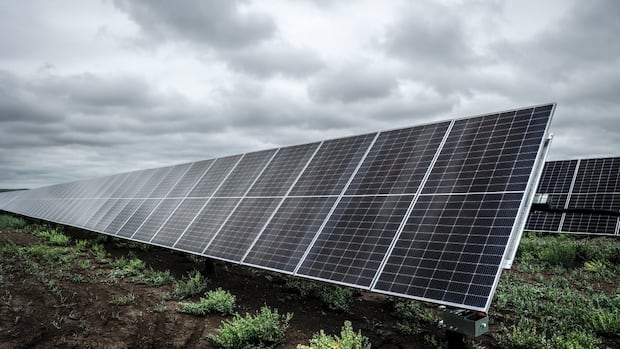Alberta’s government is looking at solar energy to reduce energy costs at correction facilities

The government of Alberta wants to process power with solar energy.
The province says that it is planning to build solar installations at five of its 10 correction facilities, with early savings on energy costs estimated at $ 1 million a year.
“The solar installations are expected to compensate about 80 percent of the energy on each site,” said Michael Kwas, press secretary of Minister of Infrastructure Martin Long, in an E -mail.
He said that the estimated savings will probably change as the installations are further designed.
A purchasing document published by the province, which reflects future projects with approved construction financing, says that the government’s budget for the solar proposal is somewhere between $ 10 million to $ 50 million.
Just like the savings, the budget figure is also for the time being, said Kwas. A more exact estimate would be determined later as the planning progresses.
Although the ministry did not say which prisons were chosen, Kwas said that there are two in the Edmonton area and there are three near Calgary.
“The considerable amount of non-agricultural country, under-utilized land at these locations offers an ideal opportunity for solar installations mounted on the ground,” said Kwas.
There are three provincial prisons in the capital: the Edmonton Remand Center, in which those who are awaiting a process houses; The Edmonton Young Daderscentrum, right next to the provisional provisional center; and the Fort Saskatchewan Correctional Center, northeast of Edmonton.
Three important legal changes were announced this month with regard to land extraction bonds, visual impact assessments and assessments of agricultural land for renewable energy. Some say that the province must do the same for oil companies.
Calgary has a provisional center, a young perpetrator and a correction center, all of which are built next to each other. There are also correction facilities in Lethbridge, Medicine Hat, Peace River and Red Deer.
Some other government buildings are already equipped with alternative systems for energy generations, said Kwas, but gave no examples.
“None of the [existing] Installations are as large as they are planned for the correction centers. “
Kwas has added the Edmonton facilities, used around 11,500 megawatt hours of energy every year. The total of Calgary is approximately 6,300 megawatts hours per year.
The Alberta-based utility supplier ATCO says that the average house in the province uses around seven megawatt hours a year.
The purchasing document says that the province intends to accept bids to build the solar arroys later this year or early 2026.
Stephen Legault, an Alberta-based Senior Manager with Lawyers Group Environmental Defense, said he does not know if other prisons in Canada are on solar energy, but he would be very happy if Alberta would break new terrain.
“When there are small announcements such as these that suggest that someone is thinking rationally within the government about our energy future, it makes me pretty happy,” Legault said.
“It’s a great idea.”
The office of the Federal Minister of Public Safety Gary Anandasangaree said that there are currently no prisons on solar energy.
“We wish the government of Alberta well in their pursuit of renewable energy to provide their correction facilities with power,” said a spokesperson in an e -mail.
Although it seems to be a unique proposal in Canada, the use of solar energy to provide prisons and prisons is almost common south of the border.
Ned Lamont, governor of Connecticut, announced earlier this year that seven correction facilities run by the State were partially powered by new solar arroys that would be expected to save the government $ 11 million US during the lifetime of the panels.
“Installing solar energy systems at correctional facilities is a way in which we can deliver cost savings in the activities of the state government, while also reducing our CO2 footprint,” Lamont said in a press release of April.
There are also examples in Colorado and California.
The prison of Santa Rita, near Dublin, California, had the largest solar installation on the roof in the entire United States when nearly 10,000 panels were installed between 2001 and 2002.
Legault said he was somewhat surprised by Alberta’s plan.
The province placed a seven-month moratorium on project goods inspections for solar and wind energy in 2023, together with rules for new projects that limit where new solar and wind farms can be built.
Kwas said that the Ministry of Infrastructure is always looking for ways to improve efficiency and lower costs, “including innovative energy solutions that minimize the impact of the environment.”
Legault said that Alberta should not stop at prisons when it comes to placing new solar arroys on or around buildings in provincial property.
“The only barrier is ingenuity, creativity and cash. And the third is something that I will admit it is always difficult,” Legault said.
“I hope it would lead to this provincial government that renewable energy is not necessarily the Boogeyman.”



